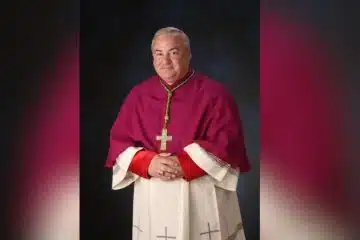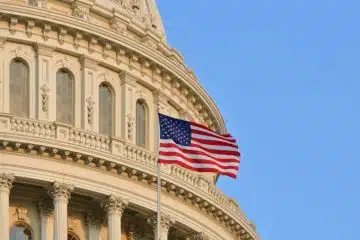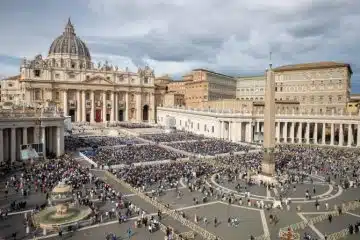Thank You, Archbishop Schnurr; Welcome Archbishop Casey

Over the past 15 years, since December 21, 2009, His Excellency Dennis M. Schnurr has served as the Archbishop of Cincinnati. He is succeeded by the 11th bishop of Cincinnati, His Excellency Robert G. Casey.
Because Cincinnati is a metropolitan archdiocese, Archbishop Schnurr has also served as chairman of the board of directors of the Catholic Conference of
Ohio. The conference is the public face of Catholics in Ohio, representing the Church’s positions on moral, policy and political issues. As chairman, Archbishop
Schnurr has guided the conference toward a consistent witness of every aspect of Church teaching. This includes advocating for unborn life, affordable health care, religious liberty, care for the environment, upholding the dignity of the human person and protection of the poor and vulnerable.
Taken as a whole, the Church’s positions on these issues do not fit either of the major political parties. Thus, to lead a coherent representation of the Church’s teaching it is necessary to resist identification with either party. In both his personal conviction and prudent leadership, Archbishop Schnurr has done just that, skillfully guiding the Catholic Conference of Ohio toward sound, clear statements of the Church’s positions. In other words, Archbishop Schnurr has exemplified the spirit of the Church’s understanding of the dynamic relationship between the bishop and the laity. As such, he has admirably represented us Catholics in Cincinnati and Ohio.
Sometime in the early second century, St. Ignatius, Bishop of Antioch, wrote a series of letters to churches around the Roman Empire. Among these letters, St. Ignatius explained that every bishop is the personification of the entire Church. “Wherever the bishop appears,” he exhorts, “there let the people be; as wherever Jesus Christ is, there is the Catholic Church.” St. Ignatius instructed the recipients of his letter to “follow the bishop, even as Jesus Christ does the Father.” Of course, this teaching is grounded squarely in Jesus’ conferral on the apostles the authority to “bind and loose” on earth and in heaven (Mt. 18:18).
This admonition has important implications for both the bishop and the laity. To place this kind of authority on the bishop is to burden him with a great weight of accountability. The bishop is both the representative of the people, as well as our teacher and shepherd. It is a profound responsibility, requiring both a commitment to service and leadership, often difficult to balance. As the sign of the Church, the bishop faces pressure from within and without. He must be, as St. Paul the Apostle declared, “all things to all people” so that he might be a salvific witness to the Gospel—the Good News of Jesus Christ.
But this does not suggest that we lay Catholics are merely passive followers of the bishop. While St. Ignatius exhorts us to be obedient to the bishop, the Church also recognizes the vital relationship between the magisterium and the laity. All Catholics are called to be witnesses and ministers of the Gospel. As Pope St. John Paul II wrote in his Apostolic Exhortation Christifedeles Laici, “A new state of affairs today both in the Church and in social, economic, political and cultural life, calls with a particular urgency for the action of the lay faithful.” The urgency of the times calls for a reciprocal diligence on the part of us all. “If lack of commitment is always unacceptable,” St. John Paul continues, “the present time renders it even more so. It is not permissible for anyone to remain idle.”
This suggests a dynamic reciprocity between the laity and the bishop, in which each supports and supplements the functions of the others. We have a proactive role under the leadership of, and in vibrant cooperation with, our bishop. The mutual relationship of the bishop and the laity provides us with the framework to welcome our new archbishop, His Excellency Robert G. Casey. Archbishop- designate Casey brings a wealth of experience as Auxiliary Bishop of Chicago. Comprised of about two million Catholics, the Chicago archdiocese is nearly five times the size of the Archdiocese of Cincinnati. As the Vicar General, Archbishop Casey has been the head of the six vicarages in Chicago, providing him with the administrative experience that will serve him well in Cincinnati. At the press conference announcing his appointment, he emphasized his close work with parish priests and lay Catholics in meeting challenges in Chicago that are like those we face in Cincinnati. This includes renewing the Church through the Beacons of Light program.
Archbishop Casey is not merely an effective administrator. A long-time pastor before he became Auxiliary Bishop of Chicago, he is highly personable and engaging. The son of an Irish immigrant father, he is at the ready with a broad smile and witty story. His fluency in Spanish and passion for Hispanic ministry will serve him well as he introduces himself to his new extended flock, with its growing Hispanic population.
Archbishop Casey has said that his 40-day pilgrimage on the Camino de Santiago Compostela in 2003 was a “transformative” event, changing him “both as a disciple and as a priest.” We Cincinnati pilgrims welcome him to continue his spiritual journey with us.
 Dr. Kenneth Craycraft, [email protected], Theology at Mount St. Mary’s Seminary & School of Theology. He is the author of Citizens Yet Strangers: Living Authentically Catholic in a Divided America.
Dr. Kenneth Craycraft, [email protected], Theology at Mount St. Mary’s Seminary & School of Theology. He is the author of Citizens Yet Strangers: Living Authentically Catholic in a Divided America.
This article appeared in the April 2025 edition of The Catholic Telegraph Magazine. For your complimentary subscription, click here













